
Worldcarblog.com
Everyone wants a Ferrari Purosangue
According to reports from Italy, Ferrari has been swamped with orders for its €390,000 Purosangue crossover and could be forced to close its order book.
Unlike competing luxury brands whose SUVs often make up the lion's share of their sales, Ferrari has decided to limit production of its first crossover to no more than 20 percent of annual production in order to maintain exclusivity.
Even assuming that Ferrari's total production of all models rises to 15,000 with the addition of the new model line, that still only amounts to 3,000 cars per year. And that may not be nearly enough to keep up with demand, Jutarnji.hr states.
"We risk not being able to meet demand and may very soon have to close orders," said Ferrari's chief commercial and marketing officer, Enrico Galliera.
The Purosangue uses a naturally aspirated V12 under the hood, a feature that none of its performance-focused competitors offer, which may explain the rush of pre-orders. Galliera claims interest "exploded" when the company announced the Purosangue would use a V12.
Ferrari is likely to add smaller-capacity hybrid models later, borrowing either the hybrid V8 powertrain from the SF90 or the electrified V6 engine from the 296 GTB, whose 3.0-liter capacity would help avoid the heavy taxes imposed on big engines in China where the model is likely to be very popular.
Still, the V12 in the Purosangue is likely to be a big factor in convincing existing die-hard Ferrari owners that the Purosangue is worthy of wearing the Ferrari badge. Ferrari says it will prioritize delivery to current owners over buyers new to the marque.
"Every Ferrari owner wants to own a Purosangua and we have to reward them, because they are the ones who made Ferrari what it is today," Galliera told Automotive News Europe.
2024 Mercedes-AMG C63
The high-performance variant of Mercedes’s entry-luxury C-class sedan will return as the 2024 C63 S, but this time it will get a radically different engine. The previous generation was powered by a twin-turbo 4.0-liter V-8 with either 469 or 503 horsepower, but this new-generation C63 will be motivated by a gasoline engine half that size: a 2.0-liter turbocharged four-cylinder that combines with an electric motor to making a whopping 671 horsepower in total. The new hybrid setup promises to improve upon the previous C63’s great performance, though the engine’s character will no doubt change radically. To help mitigate turbo lag, the downsized engine uses an electrically powered turbocharger system related to the one found in Mercedes-AMG’s Formula 1 race car. The rest of the package will be heavily based on the new C-class that debuted for the 2022 model year but with racier styling and a spruced-up interior. Mercedes-AMG has also confirmed that the junior C43 model will also return to the lineup, but we review that model separately.
What's New for 2024?
The C63 is all new for the 2024 model year and, unlike last year, it will be offered solely as a sedan. We expect to see the 2024 C63 roll into Mercedes dealerships in the middle of 2023.
Mercedes-AMG hasn’t released pricing yet but we expect the C63 to follow the new trim levels that launched with the 2022 C-class, starting with the Premium base trim at around $85,000 and going up from there.
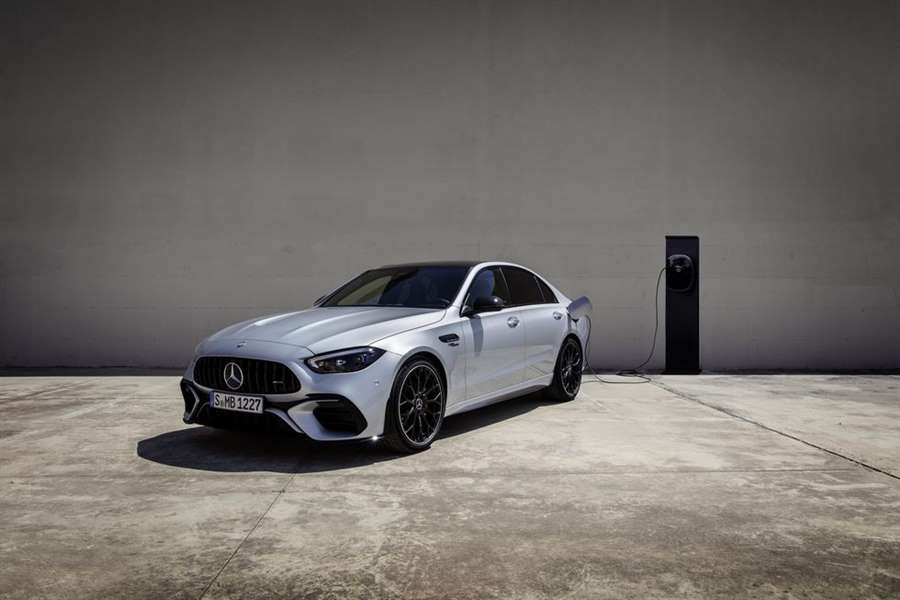
Engine, Transmission, and Performance
Gone is the old twin-turbo V-8 engine from the last-generation C63 and in its place is a turbocharged 2.0-liter four-cylinder. But before you get disappointed at an engine half the size of the old one, you should know that this inline-four will be augmented by a 201-hp electric motor and uses an electric turbocharger to reduce turbo lag. The new high-performance hybrid propulsion system will pump out a massive 671 horsepower, giving it an edge over rival to performance sedans such as the BMW M3 and the Cadillac CT4-V Blackwing, at least on paper. This setup allows for some limited all-electric driving, but only about 8 miles or so; its purpose instead is to provide similar performance to the outgoing car with better overall fuel economy. When we get a chance to test drive the new C63—which we are eager to do—we’ll update this story with driving impressions and test results.
The EPA hasn't released fuel economy figures for the 2024 C63 sedan yet. But due to the introduction of the downsized engine, we're expecting to see some fuel efficiency improvements over the outgoing model which was rated at 17 mpg city and 26 mpg highway. When we get a chance, we'll take the new C63 sedan on our 75-mph highway fuel-economy test route and update this story with its results. For more information about the C63’s fuel economy, visit the EPA's website.
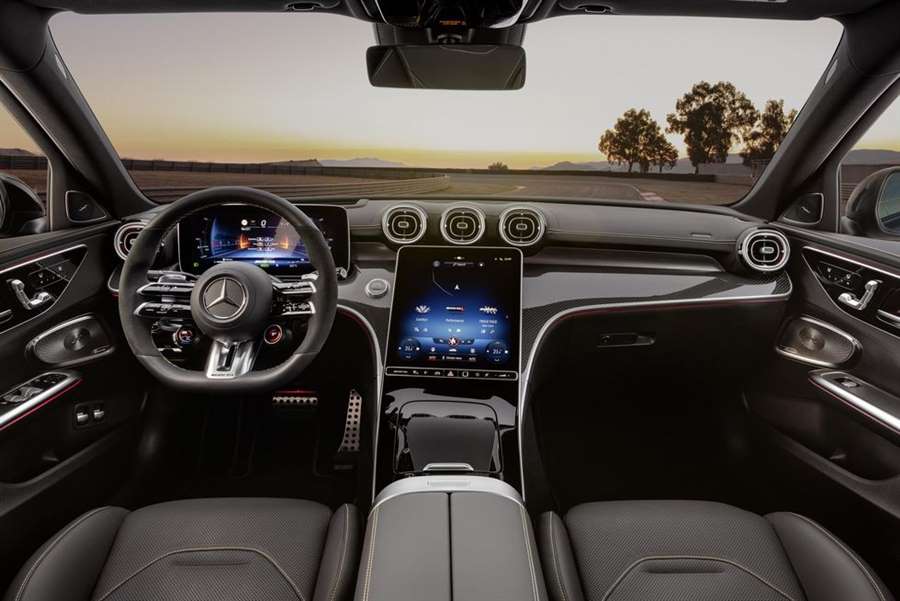
Interior, Comfort, and Cargo
The C63’s cabin looks much like the standard C-class and junior AMG C43 model, but it sports unique upholstery and stitching patterns as well as AMG-branded sport seats with openings cut out to help save weight. Mercedes hasn’t detailed every feature and option, but we expect to see plenty of luxury and convenience items available, including a panoramic sunroof, heated and cooled seats, four-zone automatic climate control, and more.
Infotainment and Connectivity
All models will likely come with the same large 11.9-inch infotainment touchscreen that is integrated into the center console and canted slightly toward the driver in the C43 model. A 12.3-inch digital gauge display will also likely be standard. Apple CarPlay and Android Auto should both be standard for wireless connectivity, and a high-end Burmester stereo system is expected to be available too.
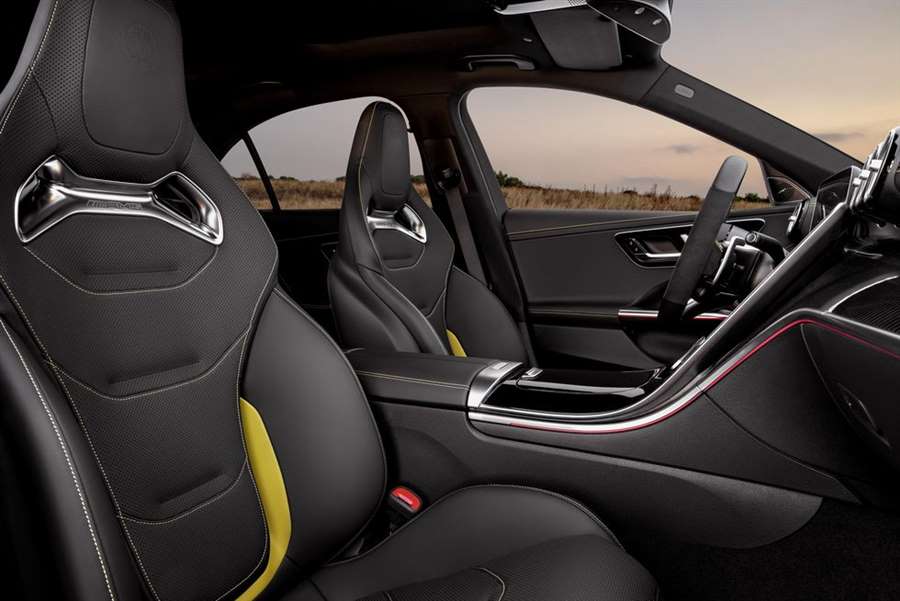
Safety and Driver-Assistance Features
Like the C43, the C63 will likely offer a host of standard driver-assistance features but unfortunately, the car's coolest tech, which includes an adaptive cruise-control system that utilizes navigation data to adjust the vehicle's speed for upcoming curves and roundabouts, will probably remain an optional upgrade. For more information about the C43's crash-test results, visit the National Highway Traffic Safety Administration (NHTSA) and Insurance Institute for Highway Safety (IIHS) websites. Key safety features are likely to include:
Warranty and Maintenance Coverage
Although rivals such as BMW, Genesis, and Volvo offer three years of complimentary maintenance, Mercedes-AMG omits that benefit from its standard warranty offerings. Otherwise, all new AMGs come with an industry-standard plan that covers most things for up to four years or 50,000 miles.
Limited warranty covers four years or 50,000 miles
Powertrain warranty covers four years or 50,000 miles
No complimentary scheduled maintenance
Source: caranddriver.com
How much cheaper were cars fifty years ago than they are today?
Everything is expensive today, we all know that. Many will say that we are in recession again or if we are not yet, we are on our way to being. Not only is the high price a stronger sensation, but salaries have more or less remained "frozen", at least that's what the Americans tell us.
It's probably the last country in the world that should be complaining about how "it's hard to live". However, even the Yankees recently made a comparison to show us how much cheaper life was exactly fifty years ago.
The cost of living jumped 9.1% between June and July this year, the biggest one-month increase in four decades. According to statistics prepared by colleagues from the MarketPlace website, currently 17% of young Americans still live with their parents, while in 1972 this was the case with only 8% of them.

The average price of a house five decades ago was 26,800 dollars (189,500 greenbacks in today's money value), while today it is 440,300 greenbacks. College prices are 120% higher, you need to spend the same amount more for annual vacations, and the most important part for our story is about the automotive industry.
Kelly Blue Book's source tells us that the current average selling price for a new four-wheeler is $48,200. There are several reasons for this, from shortages of computer chips due to which the demand is far greater than the supply, all the way to the information that customers mainly buy large pickup trucks, SUVs and crossovers.
But, fifty years ago, customers forked out an average of "only" 3,690 of the smallest greenbacks, which in today's money value is only about $26,100. It will come as a bit of a surprise to us that the Volkswagen "Beetle" was the best-selling car "across the pond" mentioned in 1972, and over 560,000 copies were delivered at a starting price of $1,780 (12,600 today's smallest greenbacks). Today, it's a Ford F Series that costs over $50,000 on average, so the difference is more than obvious.
The same source also compares the prices of certain models that were in production during both years, so for example the Toyota Corolla once cost $14,900 in today's money, while today it is $20,400. The situation is similar with the bulky SUV Chevrolet Suburban, whose value jumped from 26,600 to 56,500 of the smallest greenbacks.
Of course, there are huge differences between these vehicles and the modern ones are more powerful, better equipped, more economical and of course safer. So at the end of the day, this kind of comparison practically represents the addition of "grandmother and frog", but of course the public does not see it that way, but is guided by the theory that says that "the dollar had a much higher value in the past, compared to this one now".
2023 Toyota Sequoia Capstone First Test: Outstanding Numbers, But the Rest?
The new Sequoia is among the most statistically impressive three-rows on sale.
Pros
- Huge fuel economy gains
- Seriously improved towing capacity
- Thoughtful and easy third-row access
Cons
- Unsettled ride quality
- Interior quality fails to match the price tag
- Mushy brake pedal saps confidence
The oldest known specimen of Sequoiadendron giganteum lived for 3,266 years in the Converse Basin Grove of Giant Sequoia National Monument. That's about how long the second-generation Toyota Sequoia was on sale. OK, we're exaggerating slightly, but our first drive of the last Sequoia was published way back in November 2007, and the SUV stayed much the same during the following 15 model years that it was on sale. That is longer than double the lifecycle of most vehicles.
That SUV's age was apparent whether you looked at it, drove it, or touched it—in its sluggish transmission, ancient pre-Great-Recession-era design, pitiful fuel economy, and the generations-old switchgear and materials that littered the interior. The all-new Sequoia addresses all of those shortcomings and then some, and now that we've had a chance to stuff it full of testing equipment and spend more time behind the wheel following our first drive earlier this year, we can answer the big question: Is the Sequoia finally worth recommending to more than just the Toyota faithful?

So Long, V-8
Central to Toyota's reimagined Sequoia is its new powertrain. Gone is the 381-hp, 401-lb-ft V-8 that had been under its hood for a decade and a half. It is replaced by something thoroughly modern: a 3.4-liter (not 3.5, despite what Toyota will tell you) twin-turbo V-6 augmented by an electric motor, the same i-Force Max hybrid setup offered in range-topping Tundras. System output sums to 437 hp and a stump-pulling 583 lb-ft of torque, improvements of 56 hp and 182 lb-ft over the outgoing V-8. Toyota also swapped the old Sequoia's lazy dog of a six-speed for a new, of-this-era 10-speed automatic.
The results? All that extra torque means towing capacity increases by more than 2,000 pounds. The new Sequoia can now drag up to 9,520 pounds, which is at least 1,000 more than most SUVs in the full-size segment; only the 2023 Jeep Wagoneer with its new inline-six beats the Toyota.
As expected, the 2023 Sequoia is significantly quicker in a straight line than its predecessor, too. Our testing shows 0-60 mph in 5.6 seconds, more than half a second sooner than the quickest previous-gen model. The 2022 Ford Expedition's Stealth Performance package may beat it in a drag race, but so far this is the quickest full-size three-row we've ever tested.
The most significant improvement to this big SUV is its fuel economy. The old truck, with its thirsty old-school V-8 and outdated six-speed, was rated worst in its class at 13 mpg city and 17 mpg highway. With its standard hybrid twin-turbo V-6 and 4WD, the 2023 Sequoia is rated at 19/22 mpg on the same test cycles. That's significantly better than a comparable Chevrolet Tahoe, Ford Expedition, Nissan Armada, or GMC Yukon, and fractionally ahead of the aforementioned I-6 Wagoneer. Efficiency nuts will point out GM's diesel offerings fare better, but those SUVs can't match the Toyota's acceleration or towing capabilities.

This efficiency (relatively speaking) is all the more surprising given how, at nearly 6,200 pounds, the Toyota is among the heaviest we've tested in this space. If it doesn't impact fuel economy, it does ding the dynamics; Toyota's largest SUV stops from 60 mph in 134 feet. Among the 15 full-size SUVs we've tested over the past five model years, only two required a longer stopping distance.
Not Just The Numbers
Of course, the new Sequoia Capstone is more than its spec sheet, and spending more time with Toyota's answer to the Tahoe and Expedition exposes some unwelcome driving behaviors. There's a persistent jiggle emanating from the rear end. Even on flat roads, the live-rear-axle Sequoia never feels planted. And, yes, this is one of the few areas in which the new Sequoia lags behind its predecessor, which came with a then-unique independent rear suspension.
Driving anything other than straight, the Toyota behemoth embodies what senior editor Aaron Gold calls "big-car clumsy." Body roll is abundant in corners and the nose dives forward under braking. Multiple staffers also called out major shudders through the body structure when driving the Sequoia over washboard sections of an off-road course.
As for the new powerplant, we have mixed feedback. Drivetrain lash is evidenced by the vehicle clunking into gear, and associate online editor Alex Leanse points out that quick transitions from throttle to brake exposed hesitation in powertrain response.
The engine provides plenty of outright performance, which Gold describes as "like a V-8" but with "an invisible hand pushing the vehicle along." Credit the electric motor's torque fill. Some folks loved the hybrid twin-turbo V-6 but others noted inconsistent surges of power delivery. Toyota also makes this engine sound like a V-8, not with some clever exhaust geometry but by piping fake induction noise through the audio system. Call it disingenuous, but we're not mad about a little aural character even if it's artificial.

We have less kind words for the brake pedal. Leanse notes "a noticeable transition between regenerative and friction braking" and features editor Christian Seabaugh describes the feel as "mushy and Prius-like" to the point that it would ruin the towing experience.
Interior Insights
Beyond the driving experience, our test model came in Capstone guise, Toyota's new range-topping truck and SUV trim, which is positioned above the Platinum and TRD Pro. Our test vehicle rings in at $80,095, which makes this the most expensive offering in Toyota's lineup, in addition to landing within $8,000 of a base Lexus LX600. Keep in mind, the LX and Sequoia SUVs share their underpinnings and some mechanicals, though the Lexus is slightly smaller.
What's different? Outside, the Capstone gets giganteum 22-inch wheels (which exaggerate its jiggly ride), chrome accents, power running boards, and acoustically insulated front door glass over the Sequoia Platinum. The interior adds trim-specific semi-aniline leather upholstery, fake-looking open-pore American walnut trim, and ambient interior lighting to the panoramic glass roof and heated/ventilated first and second-row seats of the Platinum.
Editorial director Erik Johnson feels the interior materials are "decent for $60,000—not so much for $80,000" and notes uneven dashboard stitching and some chintzy-looking plastics, calling out the Capstone as a clearly dressed-up version of a more pedestrian family hauler. There is more frequent use of scratchy plastic the farther back you move in the vehicle, and the third row area is spartan.
The Sequoia's optional 14.0-inch touchscreen infotainment display (standard in Limited models and up) is a bright, responsive, generational leap over the aging 7.0-inch display in the outgoing Sequoia. Wireless smartphone mirroring and a plethora of camera feeds, including one from a 360-degree camera system, help bring the Sequoia into the present. That said, the system has no home screen or central hub outside of a thin, Apple dock-style strip of menu shortcuts flanking whatever menu is selected. Startup defaults to the navigation page which, unless you've paid for a subscription, mocks the driver with a blank screen.

Speaking of rear seating, the second-row captain's chairs are notably firm and mounted high, but both traits are in service to third-row access. Ingress requires only an easy pull of a lever mounted below the seat cushion near the door that results in the second-row seat folding in half and tilting way forward. It's effortless to reach the way-back, even for a small child. That's key, because cramped legroom and headroom mean you won't want full-size adults back there for long.
Closing Thoughts
The 2023 Toyota Sequoia represents an obvious improvement over its predecessor. This year's redesign addresses all of our qualms about that Jurassic-era SUV while also improving its towing numbers, modernizing the infotainment, including a full collection of driver-assist features as standard, and providing best-in-class accessibility to its third-row seating. Being dragged into the present isn't the same as jumping ahead of competitors, however. The Jeep Wagoneer offers a better standard powertrain, marginally higher towing capacity, superior driving dynamics, a nicer interior, and improved infotainment.
If you want a three-row Toyota that'll tow almost anything, the new Sequoia is your best bet. Even then, we'd recommend a Sequoia SR5 or Limited; those models sacrifice little in interior quality or features but deliver the same capability at a much more palatable price. Here's hoping it doesn't take 3,000 years for Toyota to make further improvements.
Source: motortrend.com
Volvo announced an electric SUV
"Later this year, we will reveal our new all-electric flagship SUV," Volvo said.
Originally electric and software defined, it is a demonstration of our future and marks the beginning of a new era of security and company.
For almost 100 years, Volvo's purpose has been to innovate and set new standards to save more lives. With the latest car, the legacy continues with the introduction of new technologies that will help and accelerate progress towards the company's vision:
That no one should be seriously injured or lose their life in a new Volvo car.
"Before we show you the car later this year, Jim Rowan will present our vision for Volvo cars and safety in the future – and offer a first look at some of the new technologies that come as standard on our next all-electric SUV. It will feature innovative features designed to increase your safety as well as those around you," the announcement reads.
The Queen went to her eternal rest in a Jaguar whose design was personally approved by PHOTO
Elizabeth II was transported to her final resting place at Windsor Castle by a modified Jaguar, the design of which was once approved by the Queen herself.
The coffin with the body of Queen Elizabeth II was transported to Windsor Castle today - as tradition dictates - in a special British-made vehicle.
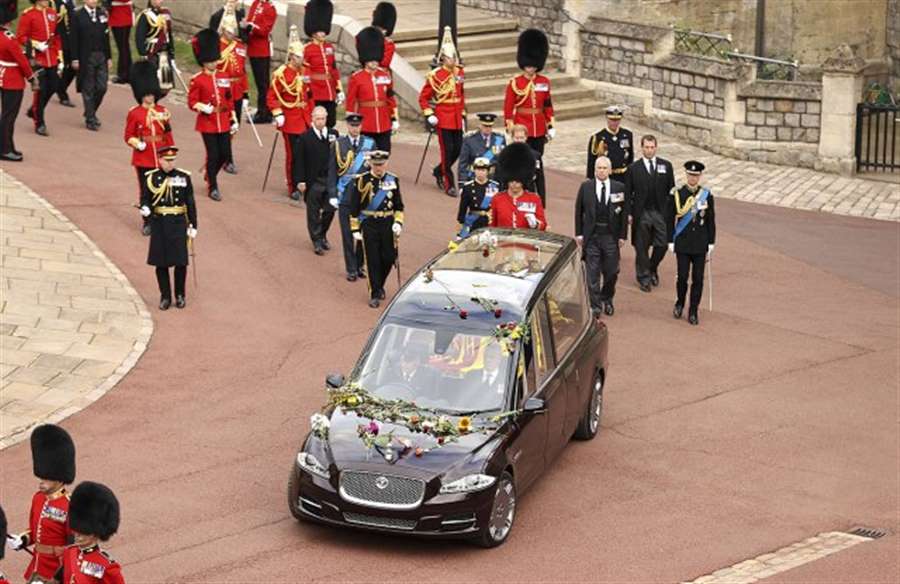
This state hearse is based on the 2010 Jaguar XJ sedan and was reportedly designed by the Royal Household and Jaguar Land Rover. According to Bazaar, the Queen was consulted on the plans and approved the final design of the car before her death.
The vehicle was modified and customized by Wilcox Limousines, based in Wigan. The hearse was used for the first time on September 13 when it carried the Queen's coffin from RAF Northolt Air Force Base to Buckingham Palace.
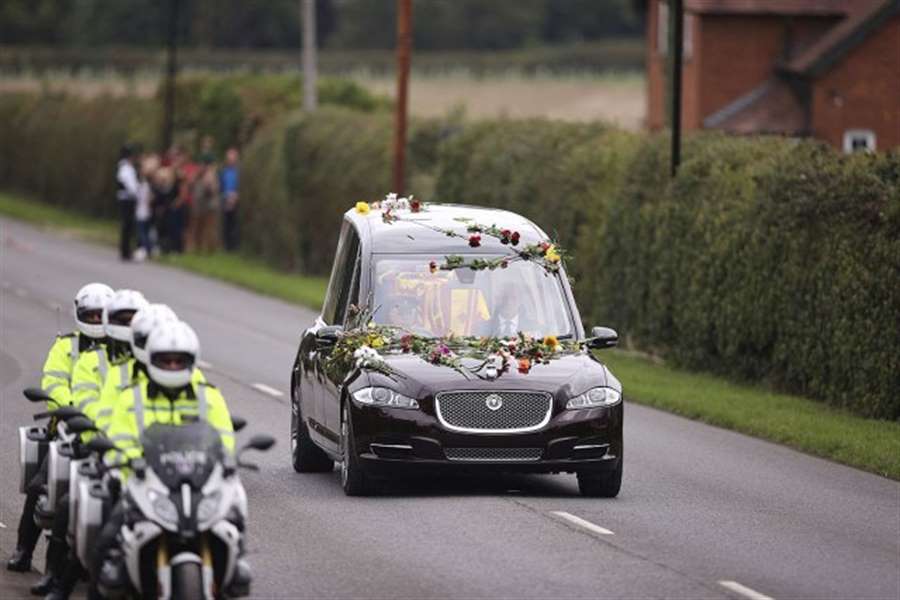
Large windows allow mourners to have a clear view of the Queen's coffin as it travels from Westminster Abbey to Windsor.
Some of the changes on the vehicle include slimmer roof pillars compared to standard models and a raised roof.
The state hearse is painted in Royal Claret, the same color as other official royal and state vehicles.
Test: Toyota Yaris 1.0 VVT-i Sol
We couldn't even dream that the Yaris would become the best-handling car in its class. Even with the weakest engine, it easily copes with city traffic, with low consumption and extremely rich safety equipment.
It really impressed us with its great performance and low consumption. Of course, there is also a hybrid variant on offer, which is by far the best-selling in Western Europe.
It is a combination of the already mentioned 1.5 atmospheric engine and an electric motor, with even lower consumption and great savings on fees and taxes.
The new issue of Auto magazine is on sale, read the driving impressions of the latest car models.
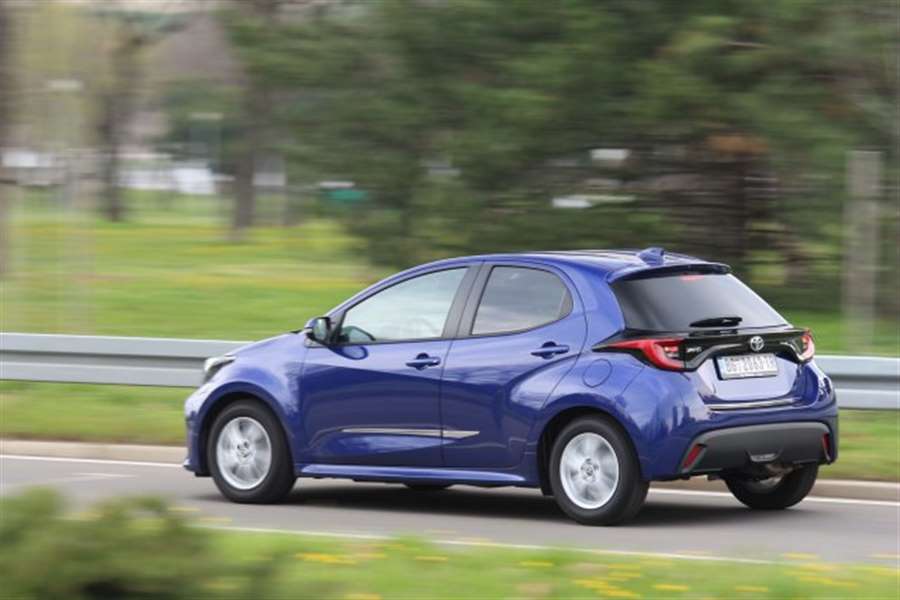
We also have subsidies, but they are such that there are still many customers who will prefer to look for a more acceptable solution for their wallet, even though it is also quite expensive. You guessed it, it's a Yaris with a 1.0 engine.
Its price starts from 16,390 euros. That's how much the basic, "luna" equipment package costs.
Don't worry, it's not a "clot". It may not have aluminum wheels, but that's why it has a system for automatic braking, prevention of unintentional lane departure, reading traffic signs, automatic activation of high beams, adaptive cruise control that automatically maintains a distance from the vehicle in front...
It doesn't have navigation, but that's why it has a seven-inch multimedia with Android Auto and Apple Car Play applications, so you can use maps from your phone without any problems.
The car that we present to you has the third "salt" equipment package in a row. The list of standard equipment also includes alloy wheels, electric rear windows, additionally tinted rear windows and a larger eight-inch multimedia system.
A reversing camera is standard, as are a rain sensor and headlights.
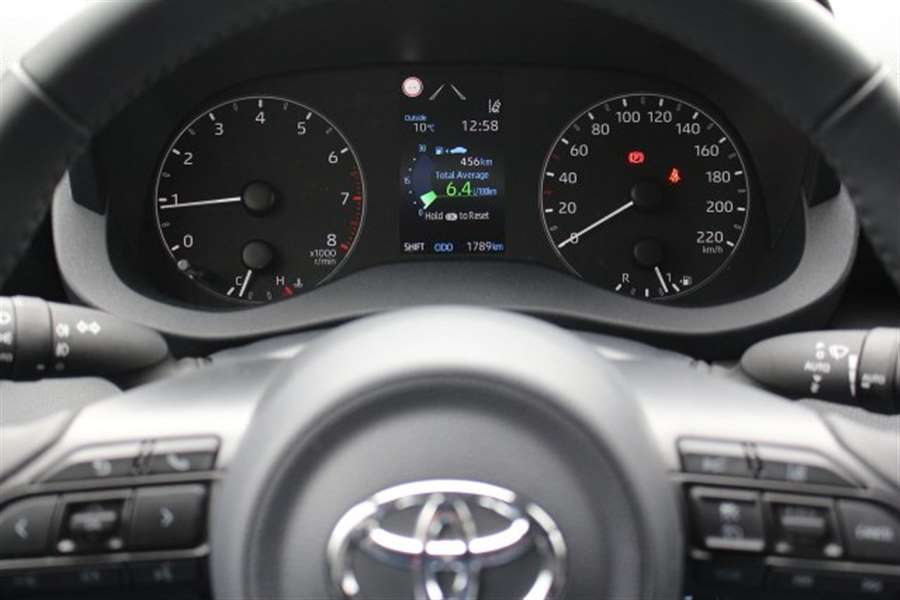
It is interesting that the standard of the second equipment package is a special acoustically insulated windshield, which is very noticeable on the highway.
Noise is really kept to a minimum, making the Yaris one of the quietest in its class.
However, the 1.0 engine is not designed for high road speeds. It reaches the maximum at 160 km/h, but anything over 130 is already an effort, especially since at that speed it "spins" at around 4100 revolutions, just like the old atmospheric cars.
The problem isn't that it doesn't have a sixth gear, it's just that it doesn't have enough power, so intermediate accelerations at speeds above 100 km/h require patience.
On the other hand, it does not prevent him from being a moderate consumer. The trip computer at 130 km/h shows about 6.5 l/100 km, which is the same result we recorded in city driving.
The city is already an environment that is incomparably more pleasing to him. The engine is very flexible, considering that it has 72 horse power, so there is no need to "spin" it in high revs for faster driving.
Simply, with it you will not feel inferior in the city, which is the essence of Yaris with this machine.
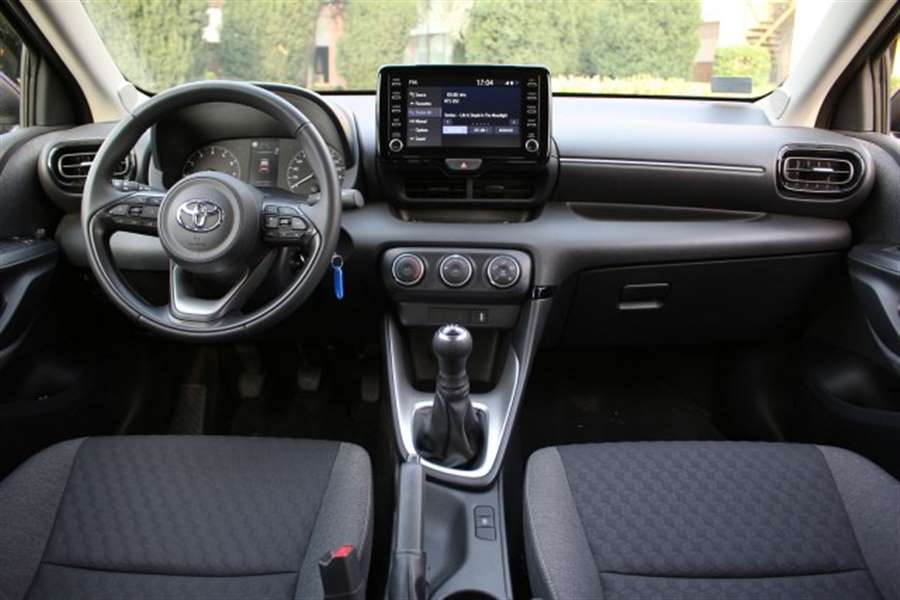
The constructors made an effort to ensure that the engine is well balanced in the sense that there are no vibrations on the back and while driving. Moreover, the sound is also muted.
Speaking of comfort, the Yaris can really boast of comfort. We are not only referring to the suspension that gently absorbs small bumps, but also to ergonomics.
You sit in a semi-reclined position at the front, just enough so that you don't feel tired from an overly erect spine during long periods of sitting behind the wheel, and yet visibility is not impaired.
All controls are very soft and precise; the shift lever is close, and the steering wheel has a great ergonomic profile. Even less experienced drivers will feel safe behind the wheel of the Yaris, given that the car is driven without the slightest effort.
Compared to the Yaris 1.5 we already tested, there are no attractive digital instruments here.
The classic is not bad at all, and there is a large display between the speedometer and tachometer, through which many settings can be made, including security systems.
As during the last test, this time the Yaris left a very positive impression with a large number of compartments and shelves on the dashboard.
For example, you can put the phone away, in several places, below and above the "climate" controls.
In both cases, the USB connector is at the same distance, so you can also use one of the short cables to connect to the car.
The materials for lining the cabin are not like the Corolla, but we have to praise the soft dashboard and the interesting material in the upholstery of the doors.
By its texture and structure, it reminds us of the material used for the inner lining of the roof.
We also liked the ergonomically interesting solution of the handle for opening the door, which is somehow tucked into the handle itself.
It may seem oddly placed at first glance, but it is absolutely in the right place, right at your fingertips.
The high position of the window regulator buttons is also specific, but they are also exactly where they should be - right under the fingers.
The rear seats are a separate story. They are by far the most comfortable in the class, with a specially profiled backrest that really rests the back, especially if you are on a long drive.
Compared to other competitors in the B segment, the Yaris offers more than decent comfort for the legs and head. A person of average height has five more fingers of space up to the "sky".
Unfortunately, the "salt" equipment package does not include pockets in the seat backs, nor a spare wheel.
If you are seriously considering buying a new Yaris, we recommend the 1.5 engine versions.
The price is slightly higher and the difference in performance is really big, especially if you plan to drive outside the city. Yaris with "Stella" equipment package is currently on sale, which costs 16,990 euros including VAT.
Compared to the tested "salt", it does not have alloy rims, electric rear windows and has a smaller multimedia display, but that's why all the safety systems are there.
Whatever gear you decide on, you won't go wrong. You will definitely get one of the most technically and ergonomically advanced city cars, where safety and driving characteristics were in the first place.
And the design? Neither male nor female. This is a car that just appeals to everyone.
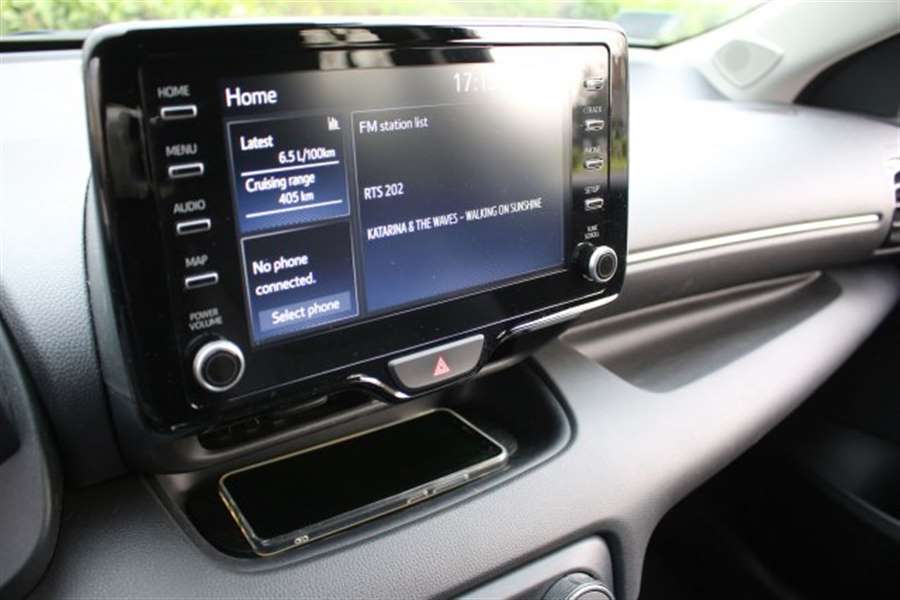
Navigation from the phone
The fact that navigation is not part of the standard equipment is not a problem. You can always connect your mobile phone via the Apple Car Play and Android Auto apps and use the software and map of your choice.
At the same time, you can listen to one of the internet radio stations, as well as use other services.
Semi-autonomous driving
Every Yaris, even the cheapest, has top security systems. In addition to automatic braking with recognition of pedestrians day and night, cyclists during the day and reacting at the intersection when turning, a semi-autonomous driving system is also standard.
It consists of radar cruise control and a camera, so that in addition to maintaining a distance from the vehicle in front, the Yaris keeps the center of the traffic lane. The car practically steers itself, even in curves.
It is only up to the driver to keep his hands on the wheel because he is responsible for driving. If you do not return your hands to the rim after a few seconds of not holding the steering wheel, the lane keeping system will turn off, with a light and sound warning.
If you really want, you can turn off the security systems individually.
Just a few extras
The list of additional equipment is very short at Toyota. Apart from the color, you can pay extra for the automatic (CVT) transmission, which costs 1300 euros and is only available with the 1.5 engine, and of course, the hybrid.
The remaining two surcharges refer to the panoramic roof and additional safety systems in the form of blind spot control and head-up display.
They can only be ordered with the two highest packages.
Toyota Yaris 1.0 VVT-i Sol: Specifications
Engine: 3 cyl., volume 998 ccm, power 53 kW (72 hp) at 6000 rpm, max. about. torque 93 Nm at 4400 rpm, gearbox manual, 5 degrees
Dimensions: L/W/H 3940/1745/1500 mm, intermediate axle. distance 2560 mm, trunk 286 l, tank 42 l, weight 1040 kg, tires 195/55 R16
Performance: max. speed 160 km/h, acceleration 0-100 km/h 14.6 s, consumption (WLTP) 4.8-6.6 l/100 km, CO2 emissions 126 g/km

















